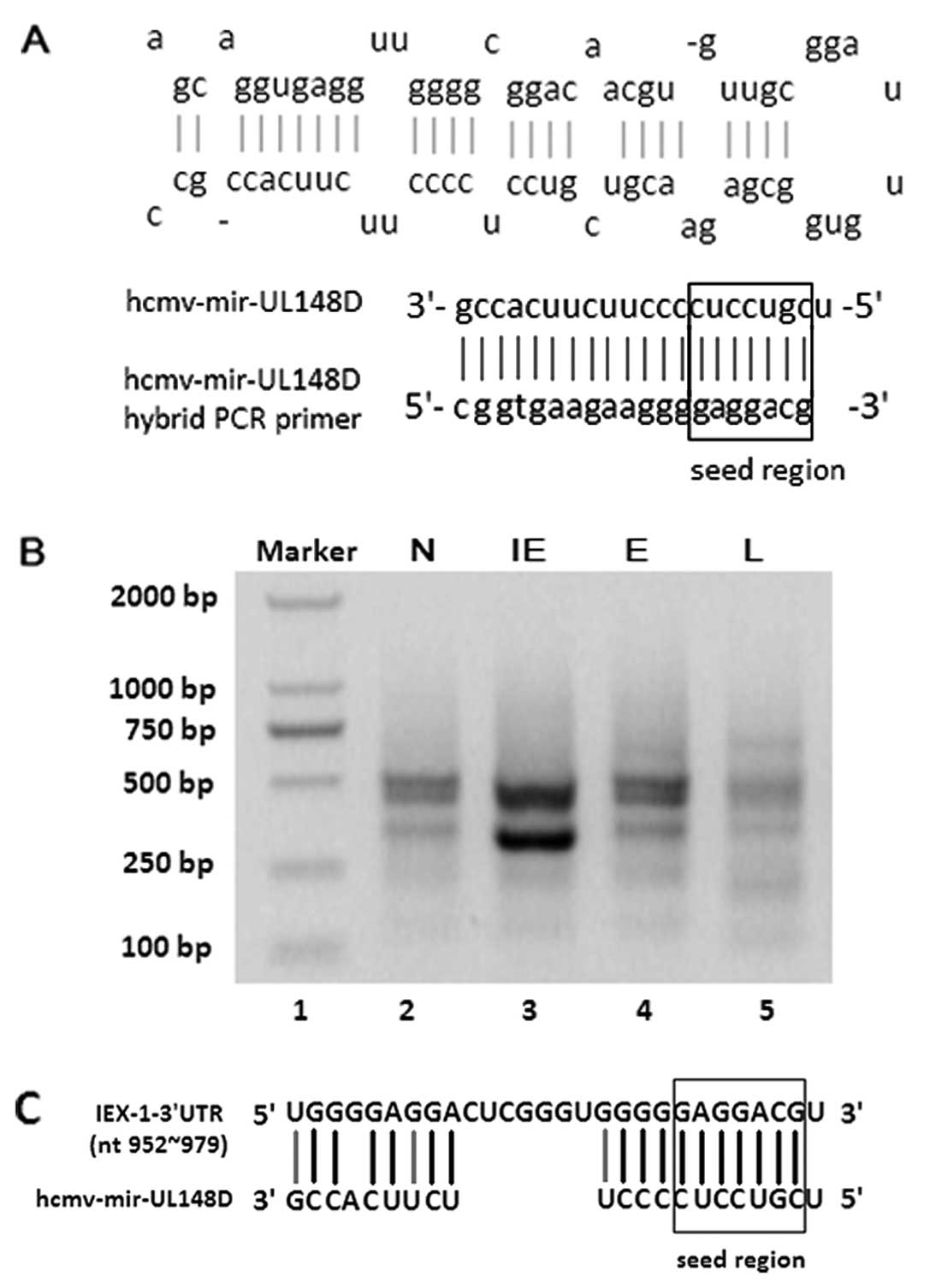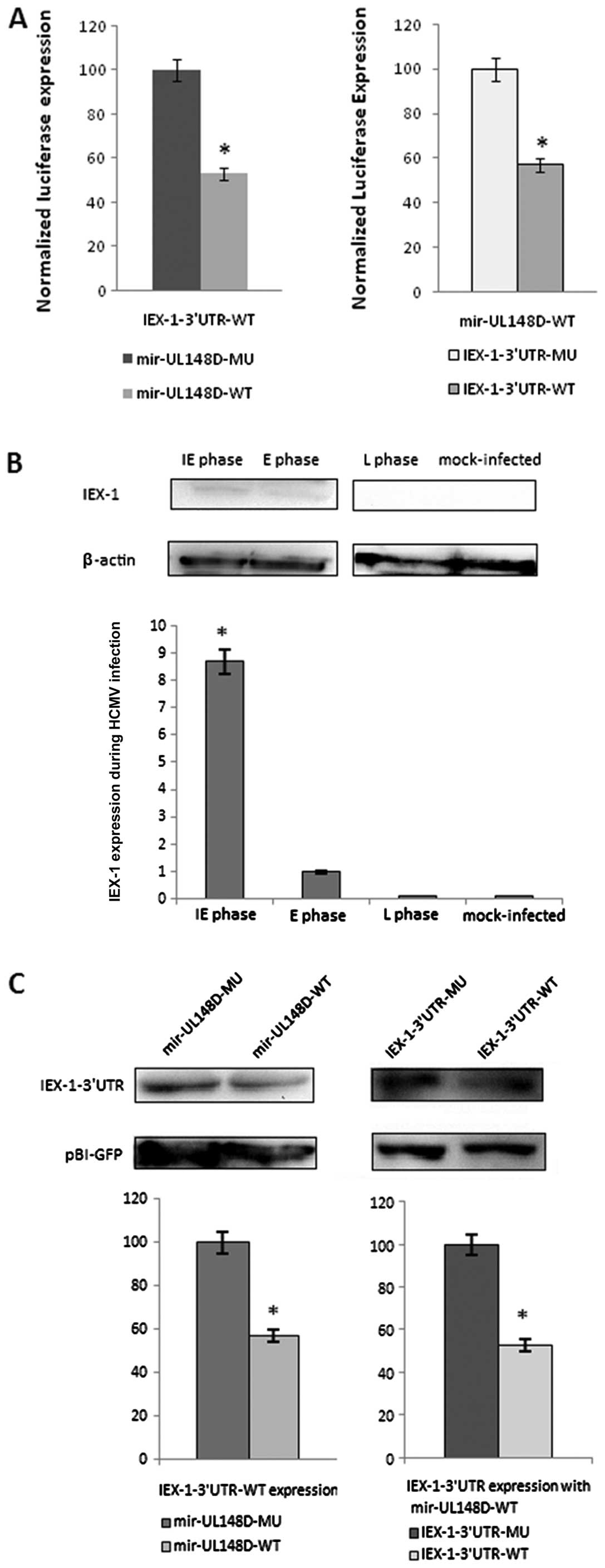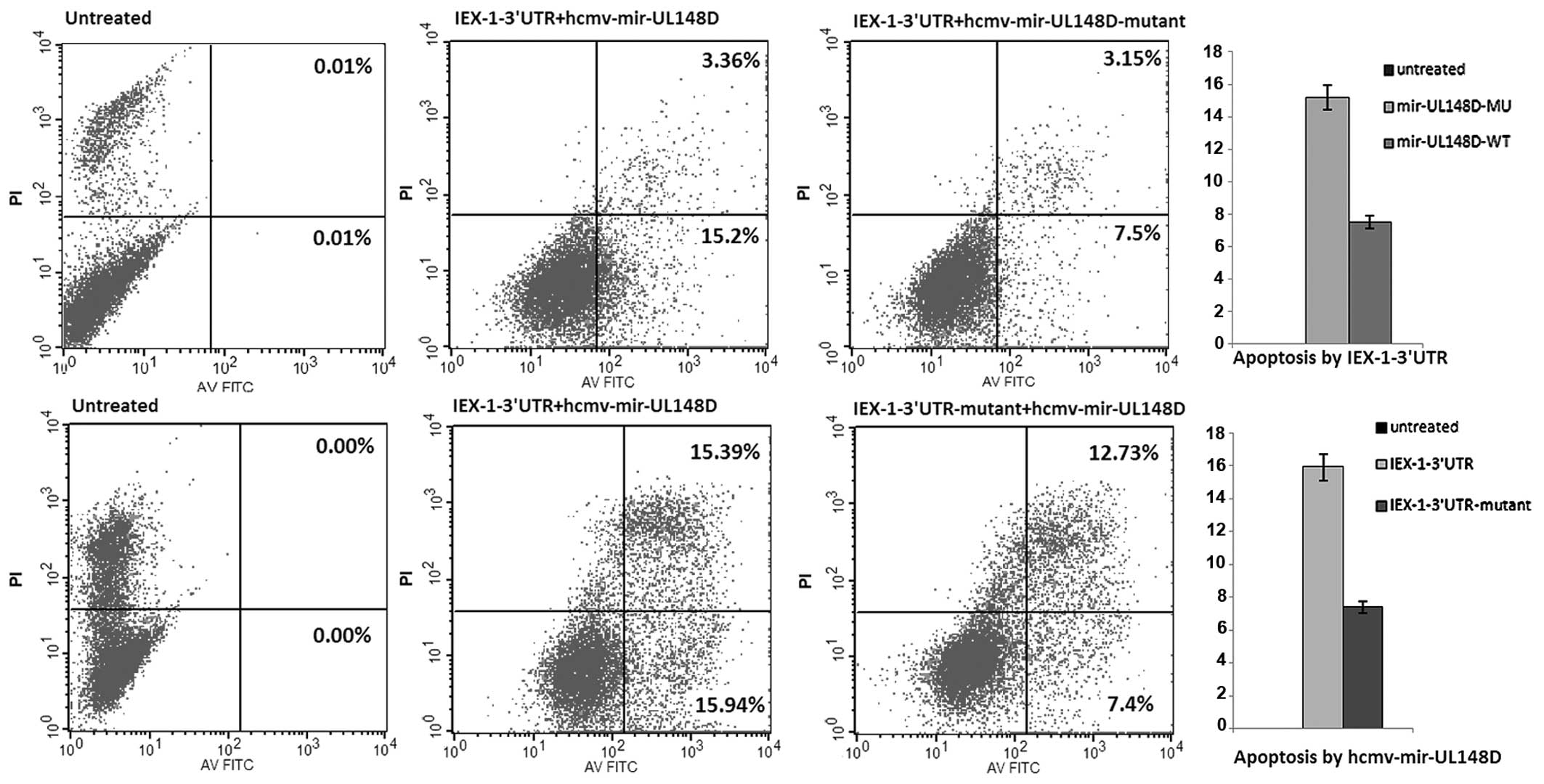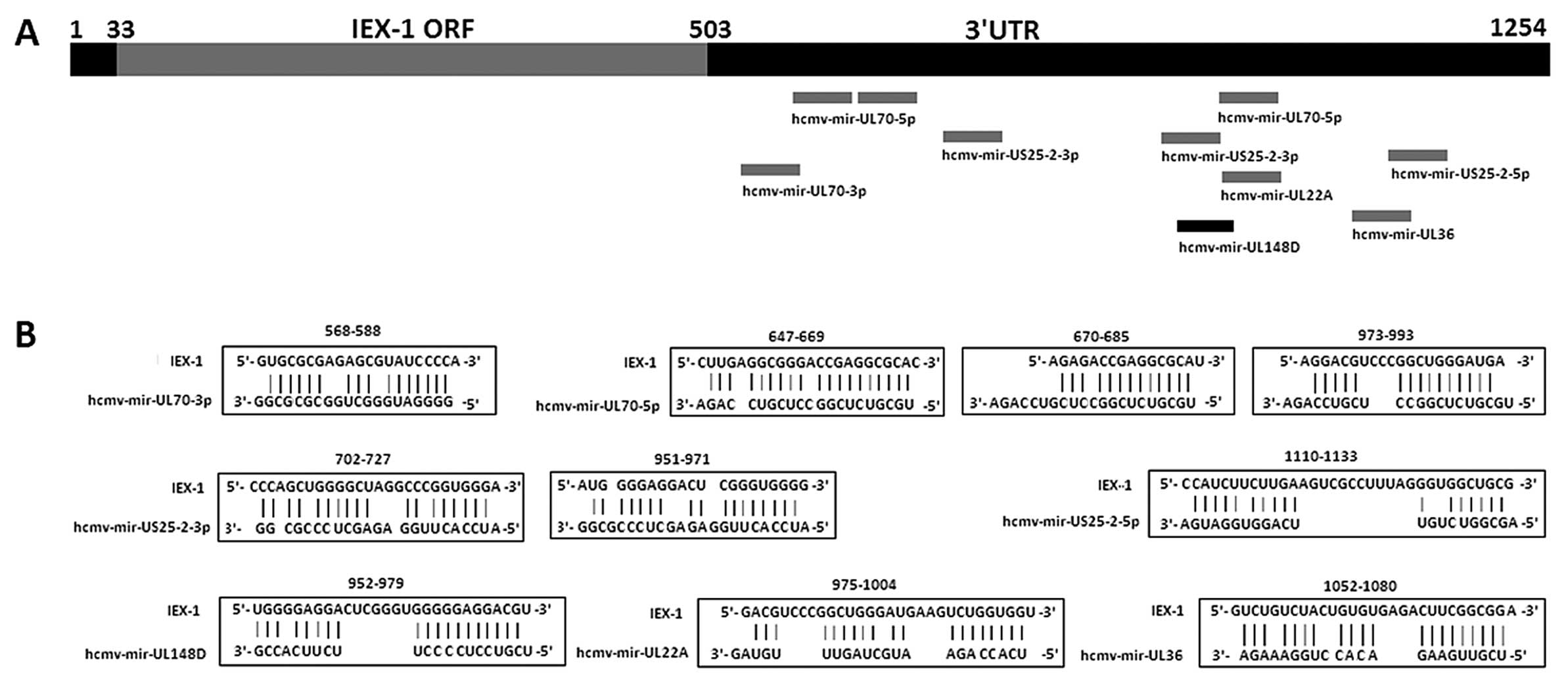|
1
|
Griffiths PD, Cope AV, Hassan-Walker AF
and Emery VC: Diagnostic approaches to cytomegalovirus infection in
bone marrow and organ transplantation. Transpl Infect Dis.
1:179–186. 1999. View Article : Google Scholar : PubMed/NCBI
|
|
2
|
Dolan A, Cunningham C, Hector RD, et al:
Genetic content of wild-type human cytomegalovirus. J Gen Virol.
85:1301–1312. 2004. View Article : Google Scholar : PubMed/NCBI
|
|
3
|
Cha TA, Tom E, Kemble GW, Duke GM,
Mocarski ES and Spaete RR: Human cytomegalovirus clinical isolates
carry at least 19 genes not found in laboratory strains. J Virol.
70:78–83. 1996.PubMed/NCBI
|
|
4
|
Dunn W, Chou C, Li H, et al: Functional
profiling of a human cytomegalovirus genome. Proc Natl Acad Sci
USA. 100:14223–14228. 2003. View Article : Google Scholar : PubMed/NCBI
|
|
5
|
Ashiru O, Bennett NJ, Boyle LH, Thomas M,
Trowsdale J and Wills MR: NKG2D ligand MICA is retained in the
cis-Golgi apparatus by human cytomegalovirus protein UL142. J
Virol. 83:12345–12354. 2009. View Article : Google Scholar : PubMed/NCBI
|
|
6
|
Bennett NJ, Ashiru O, Morgan FJ, et al:
Intracellular sequestration of the NKG2D ligand ULBP3 by human
cytomegalovirus. J Immunol. 185:1093–1102. 2010. View Article : Google Scholar : PubMed/NCBI
|
|
7
|
Prod’homme V, Sugrue DM, Stanton RJ, et
al: Human cytomegalovirus UL141 promotes efficient downregulation
of the natural killer cell activating ligand CD112. J Gen Virol.
91:2034–2039. 2010.PubMed/NCBI
|
|
8
|
Poole E, Groves I, MacDonald A, Pang Y,
Alcami A and Sinclair J: Identification of TRIM23 as a cofactor
involved in the regulation of NF-kappaB by human cytomegalovirus. J
Virol. 83:3581–3590. 2009. View Article : Google Scholar : PubMed/NCBI
|
|
9
|
Poole E, Atkins E, Nakayama T, Yoshie O,
Groves I, Alcami A and Sinclair J: NF-kappaB-mediated activation of
the chemokine CCL22 by the product of the human cytomegalovirus
gene UL144 escapes regulation by viral IE86. J Virol. 82:4250–4256.
2008. View Article : Google Scholar : PubMed/NCBI
|
|
10
|
Montag C, Wagner JA, Gruska I, Vetter B,
Wiebusch L and Hagemeier C: The latency-associated UL138 gene
product of human cytomegalovirus sensitizes cells to tumor necrosis
factor alpha (TNF-alpha) signaling by upregulating TNF-alpha
receptor 1 cell surface expression. J Virol. 85:11409–11421. 2011.
View Article : Google Scholar
|
|
11
|
Ambros V: The functions of animal
microRNAs. Nature. 431:350–355. 2004. View Article : Google Scholar : PubMed/NCBI
|
|
12
|
Kloosterman WP and Plasterk RH: The
diverse functions of microRNAs in animal development and disease.
Dev Cell. 11:441–450. 2006. View Article : Google Scholar : PubMed/NCBI
|
|
13
|
Zhao Y and Srivastava D: A developmental
view of microRNA function. Trends Biochem Sci. 32:189–197. 2007.
View Article : Google Scholar : PubMed/NCBI
|
|
14
|
Grey F, Antoniewicz A, Allen E, Saugstad
J, McShea A, Carrington JC and Nelson J: Identification and
characterization of human cytomegalovirus-encoded microRNAs. J
Virol. 79:12095–12099. 2005. View Article : Google Scholar : PubMed/NCBI
|
|
15
|
Hutvagner G and Zamore PD: A microRNA in a
multiple-turnover RNAi enzyme complex. Science. 297:2056–2060.
2002. View Article : Google Scholar : PubMed/NCBI
|
|
16
|
Hammond SM, Bernstein E, Beach D and
Hannon GJ: An RNA-directed nuclease mediates post-transcriptional
gene silencing in Drosophila cells. Nature. 404:293–296.
2000. View
Article : Google Scholar : PubMed/NCBI
|
|
17
|
Mourelatos Z, Dostie J, Paushkin S, et al:
miRNPs: a novel class of ribonucleoproteins containing numerous
micro-RNAs. Genes Dev. 16:720–728. 2002. View Article : Google Scholar : PubMed/NCBI
|
|
18
|
Bartel DP: MicroRNAs: genomics,
biogenesis, mechanism, and function. Cell. 116:281–297. 2004.
View Article : Google Scholar : PubMed/NCBI
|
|
19
|
Brennecke J, Stark A, Russell RB and Cohen
SM: Principles of microRNA-target recognition. PLoS Biol.
3:e852005. View Article : Google Scholar : PubMed/NCBI
|
|
20
|
Doench JG and Sharp PA: Specificity of
microRNA target selection in translational repression. Genes Dev.
18:504–511. 2004. View Article : Google Scholar : PubMed/NCBI
|
|
21
|
Tuddenham L and Pfeffer S: Roles and
regulation of microRNAs in cytomegalovirus infection. Biochim
Biophys Acta. 1809:613–622. 2011. View Article : Google Scholar : PubMed/NCBI
|
|
22
|
Stern-Ginossar N, Elefant N, Zimmermann A,
et al: Host immune system gene targeting by a viral miRNA. Science.
317:376–381. 2007. View Article : Google Scholar : PubMed/NCBI
|
|
23
|
Grey F, Meyers H, White EA, Spector DH and
Nelson J: A human cytomegalovirus-encoded microRNA regulates
expression of multiple viral genes involved in replication. PLoS
Pathog. 3:e1632007. View Article : Google Scholar : PubMed/NCBI
|
|
24
|
Kim S, Lee S, Shin J, et al: Human
cytomegalovirus microRNA miR-US4–1 inhibits CD8(+) T cell responses
by targeting the aminopeptidase ERAP1. Nat Immunol. 12:984–991.
2011.PubMed/NCBI
|
|
25
|
Kim Y, Lee S, Kim S, Kim D, Ahn JH and Ahn
K: Human cytomegalovirus clinical strain-specific microRNA
miR-UL148D targets the human chemokine RANTES during infection.
PLoS Pathog. 8:e10025772012. View Article : Google Scholar : PubMed/NCBI
|
|
26
|
Stern-Ginossar N, Saleh N, Goldberg MD,
Prichard M, Wolf DG and Mandelboim O: Analysis of
humancytomegalovirus-encoded microRNA activity during infection. J
Virol. 83:10684–10693. 2009. View Article : Google Scholar : PubMed/NCBI
|
|
27
|
Huang Y, Qi Y, Ruan Q, Ma Y, He R, Ji Y
and Sun Z: A rapid method to screen putative mRNA targets of any
known microRNA. Virol J. 8:82011. View Article : Google Scholar : PubMed/NCBI
|
|
28
|
Rajewsky N: microRNA target predictions in
animals. Nat Genet. 38:S8–S13. 2006. View
Article : Google Scholar
|
|
29
|
Baek D, Villén J, Shin C, Camargo FD, Gygi
SP and Bartel DP: The impact of microRNAs on protein output.
Nature. 455:64–71. 2008. View Article : Google Scholar : PubMed/NCBI
|
|
30
|
Bentwich I: Prediction and validation of
microRNAs and their targets. FEBS Lett. 579:5904–5910. 2005.
View Article : Google Scholar : PubMed/NCBI
|
|
31
|
Tirabassi R, Hook L, Landais I, Grey F,
Meyers H, Hewitt H and Nelson J: Human cytomegalovirus US7 is
regulated synergistically by two virally encoded microRNAs and by
two distinct mechanisms. J Virol. 85:11938–11944. 2011. View Article : Google Scholar : PubMed/NCBI
|
|
32
|
Hon LS and Zhang Z: The roles of binding
site arrangement and combinatorial targeting in microRNA repression
of gene expression. Genome Biol. 8:R1662007. View Article : Google Scholar : PubMed/NCBI
|
|
33
|
Saetrom P, Heale BS, Snøve O Jr, Aagaard
L, Alluin J and Rossi JJ: Distance onstraints between microRNA
target sites dictate efficacy and cooperativity. Nucleic Acids Res.
35:2333–2342. 2007. View Article : Google Scholar : PubMed/NCBI
|
|
34
|
Arlt A, Grobe O, Sieke A, Kruse ML, Folsch
UR, Schmidt WE and Schafer H: Expression of the NF-kappa B target
gene IEX-1 (p22/PRG1) does not prevent cell death but instead
triggers apoptosis in HeLa cells. Oncogene. 20:69–76. 2001.
View Article : Google Scholar : PubMed/NCBI
|
|
35
|
Kumar R, Kobayashi T, Warner GM, Wu Y,
Salisbury JL, Lingle W and Pittelkow MR: A novel immediate early
response gene, IEX-1, is induced by ultraviolet radiation in human
keratinocytes. Biochem Biophys Res Commun. 253:336–341. 1998.
View Article : Google Scholar : PubMed/NCBI
|
|
36
|
Arlt A, Kruse ML, Breitenbroich M, et al:
The early response gene IEX-1 attenuates NF-kappaB activation in
293 cells, a possible counter-regulatory process leading to
enhanced cell death. Oncogene. 22:3343–3351. 2003. View Article : Google Scholar : PubMed/NCBI
|
|
37
|
Schafer H, Arlt A, Trauzold A,
Hunermann-Jansen A and Schmidt WE: The putative apoptosis inhibitor
IEX-1L is a mutant nonspliced variant of p22(PRG1/IEX-1) and is not
expressed in vivo. Biochem Biophys Res Commun. 262:139–145. 1999.
View Article : Google Scholar : PubMed/NCBI
|
|
38
|
Skaletskaya A, Bartle LM, Chittenden T,
McCormick AL, Mocarski ES and Goldmacher VS: A
cytomegalovirus-encoded inhibitor of apoptosis that suppresses
caspase-8 activation. Proc Natl Acad Sci USA. 98:7829–7834. 2001.
View Article : Google Scholar : PubMed/NCBI
|
|
39
|
Hayajneh WA, Colberg-Poley AM, Skaletskaya
A, et al: The sequence and antiapoptotic functional domains of the
human cytomegalovirus UL37 exon 1 immediate early protein are
conserved in multiple primary strains. Virology. 279:233–240. 2001.
View Article : Google Scholar : PubMed/NCBI
|
|
40
|
Goldmacher VS: vMIA, a viral inhibitor of
apoptosis targeting mitochondria. Biochimie. 84:177–185. 2002.
View Article : Google Scholar : PubMed/NCBI
|


















